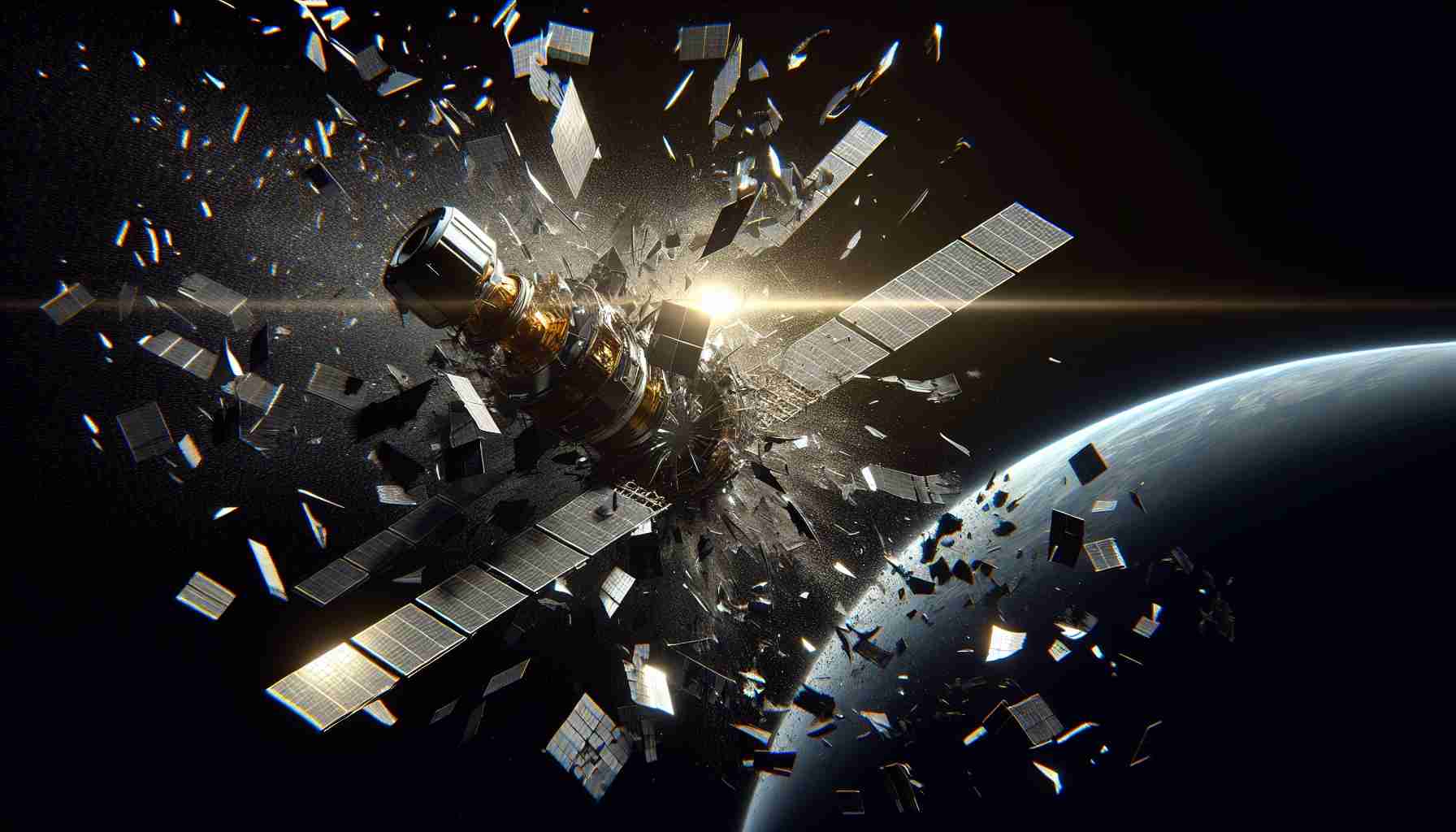
A communications satellite has suffered a catastrophic failure while positioned in geostationary orbit, resulting in significant fragmentation and the creation of debris. The satellite, identified as Intelsat 33e, ceased operations on October 19, leading to widespread service interruptions for customers across numerous regions, including Europe and Africa.
Following an analysis, it was revealed on October 21 that the satellite had disintegrated at an altitude of 35,786 kilometers (22,236 miles) above Earth’s equator. In response to this incident, Intelsat announced coordination efforts with Boeing and relevant government bodies to assess the situation thoroughly, including the establishment of a specialized review board focused on understanding the underlying issues.
Experts have started to identify fragments from the satellite, estimating at least 57 pieces of debris resulting from the disintegration. Launched in 2016, Intelsat 33e served as a telecommunications relay, and its loss adds to the growing concerns regarding space debris, a dilemma exacerbated by the rapid rise in satellite deployments.
Notably, the satellite had faced multiple operational challenges during its tenure, indicating a troubled history. With the satellite constellation industry booming, the number of objects in orbit is surging, amplifying the dangers associated with satellite collisions and the buildup of debris in Earth’s orbit.
Currently, estimates suggest there are over 170 million pieces of space debris, alongside thousands of larger fragments that pose serious threats to both satellites and crewed space missions.
The disintegration of Intelsat 33e in geostationary orbit not only disrupted communication services but has also reignited serious concerns regarding the issue of space debris, which has become an escalating threat to satellites and future missions. As global satellite launches increase rapidly, the critical question arises: what measures can be implemented to prevent such incidents in the future?
One of the pressing challenges is the growing density of satellites in Earth’s orbit. Currently, there are approximately 6,000 active satellites orbiting the planet, and with projected launches from companies like SpaceX and OneWeb to deploy thousands more, the potential for collisions rises exponentially.
The disintegration of Intelsat 33e underscores a significant controversy surrounding the regulation and mitigation of space debris. This incident highlights the need for international guidelines to manage not only the decommissioning of satellites but also the active monitoring of space debris. The United Nations Office for Outer Space Affairs (UNOOSA) has called for more robust frameworks to manage space traffic, yet implementation remains challenging.
Key questions that need to be addressed include:
1. What are the long-term ramifications of space debris on satellite operations?
– Experts warn that the increasing population of debris could make certain orbits unusable in the future, risking the entire satellite operation ecosystem.
2. What technological solutions are available to mitigate space debris?
– Innovative solutions, such as “space sweeper” satellites and improving satellite design for better end-of-life disposal, are being explored. These technologies aim to either capture and deorbit debris or ensure satellites leave a minimal footprint when they’re no longer operational.
3. How can international cooperation be strengthened to address this global issue?
– Many experts argue that a collective international effort is essential. This could include establishing binding agreements on satellite launches, employing debris removal techniques, and a shared database for tracking space debris.
Advantages of addressing space debris include:
– Enhanced Safety: Increasing measures to reduce and mitigate space debris will lead to safer operations in orbit, reducing the risk of collisions.
– Sustainable Space Environment: Responsible management of debris creates a sustainable environment for future missions and the continued use of geostationary orbits.
However, there are also significant disadvantages associated with mitigating space debris:
– High Costs: Implementing debris removal technologies and establishing regulatory frameworks requires significant funding and investment.
– Technical Challenges: Current technologies have limitations, and untested solutions pose risks that could lead to additional debris creation during removal attempts.
With the disintegration of Intelsat 33e, the issue of space debris is more critical than ever. As the number of satellites in orbit continues to increase, addressing the risks associated with space debris will require urgent attention from governments, space agencies, and private companies alike.
For further information on space debris and related initiatives, visit NASA and UNOOSA.



